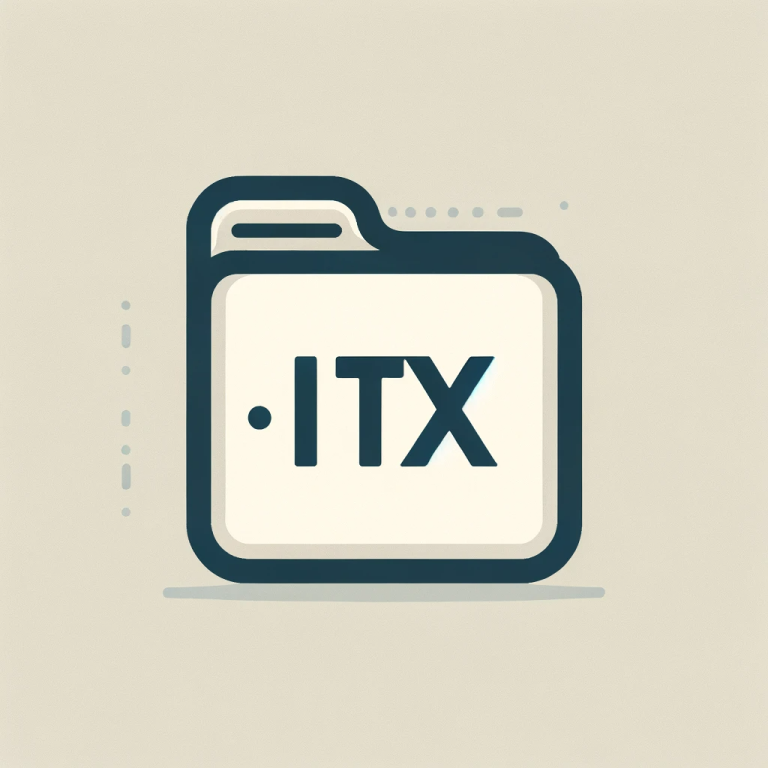.ITX File Extension

FileNet eForms Designer Template
| Developer | IBM |
| Popularity | |
| Category | Data Files |
| Format | .ITX |
| Cross Platform | Update Soon |
What is an ITX file?
In the world of digital document management, file extensions play a crucial role in identifying and categorizing different types of files. One such file extension, .ITX, is associated with FileNet eForms Designer Template files.
These files are essential components in creating and designing electronic forms, streamlining data collection, and enhancing document management efficiency.
In this article, we will delve into the .ITX file extension, exploring its origin, history, file structure, advantages, disadvantages, conversion methods, and compatibility across various operating systems.
More Information.
FileNet eForms Designer Template files, denoted by the .ITX file extension, were introduced to simplify the process of creating electronic forms.
These templates provide a structured framework for designing forms that can be used for data collection, document routing, and automation within organizations.
The initial purpose of .ITX files was to enable businesses and enterprises to transition from paper-based forms to electronic versions, thereby reducing paper waste and enhancing data accuracy.
With eForms Designer, users can easily design forms, define data fields, create dynamic sections, and establish workflows for processing the collected information.
Origin Of This File.
The .ITX file extension is closely tied to FileNet eForms Designer, a software application developed by IBM for designing electronic forms.
FileNet eForms Designer is part of the broader IBM FileNet Enterprise Content Management (ECM) suite, which helps organizations manage, store, and retrieve electronic documents and information.
File Structure Technical Specification.
.ITX files have a specific structure that allows them to store form designs and associated metadata. While the technical details may vary across versions, a typical .ITX file structure includes the following components:
- Form Layout: This section defines the visual layout of the electronic form, including the placement of text fields, checkboxes, radio buttons, and other form elements.
- Data Fields: .ITX files store information about the data fields used in the form, specifying data types, validation rules, and default values.
- Form Rules: eForms Designer allows users to create rules and scripts to control form behavior. These rules are also stored within the .ITX file.
- Workflow Configuration: If the form is part of a larger workflow process, the .ITX file may contain information about how the form integrates into the workflow, including routing and approval rules.
- Metadata: .ITX files may include metadata such as form version, creation date, and author information.
How to Convert the File?
Converting .ITX files (FileNet eForms Designer Template files) into other formats can be essential when you need to share or work with these files in applications that don’t support the .ITX format. Here’s a step-by-step guide on how to convert .ITX files:
1. Export as PDF (Recommended):
- Open the .ITX file using FileNet eForms Designer.
- In the software, navigate to the export or save option for the form/template.
- Select “PDF” as the export format.
- Customize settings like page size or orientation if needed.
- Click “Export” or “Save” to create the PDF version of the form/template.
2. Data Extraction (Structured Data):
- Open the .ITX file in FileNet eForms Designer.
- Review the form and manually copy data from each field.
- Paste the data into a spreadsheet program like Microsoft Excel or Google Sheets.
- Organize the data into columns to keep its structure intact.
3. Recreate the Form in Another Application:
- Open a suitable application such as Microsoft Word, Google Forms, or Adobe Acrobat.
- Mimic the form’s layout, including text, fields, checkboxes, and other elements.
- Save the recreated form in your desired format, such as PDF or DOCX.
4. Third-Party Conversion Tools:
- Explore third-party conversion tools that claim to support .ITX file conversion.
- Be cautious when using these tools, as the quality and accuracy of the conversion can vary.
Advantages And Disadvantages.
Advantages:
- Streamlined Data Collection: .ITX files enable organizations to streamline data collection processes by replacing paper forms with electronic versions. This reduces manual data entry, improves data accuracy, and enhances efficiency.
- Customization: FileNet eForms Designer offers extensive customization options, allowing users to design forms tailored to their specific needs.
- Integration: .ITX files can be seamlessly integrated with other FileNet ECM components, facilitating document management and workflow automation.
- Version Control: Organizations can maintain version control for their electronic forms, ensuring that the most up-to-date versions are used.
Disadvantages:
- Proprietary Format: .ITX files are a proprietary format used exclusively by FileNet eForms Designer, which can limit compatibility and flexibility for users who want to migrate to other systems.
- Software Dependency: Opening and editing .ITX files require the use of FileNet eForms Designer software, which may not be readily available to all users.
- Learning Curve: Using eForms Designer to create and edit .ITX files may have a learning curve, particularly for users who are not familiar with the software.
How to Open ITX?
Open In Windows
Open .ITX files with FileNet eForms Designer, if available. Otherwise, consider using compatibility layers or virtualization to run it on Windows.
Open In Linux
Use compatibility layers, virtual machines, or explore Linux-compatible alternatives for .ITX files.
Open In MAC
Similar to Linux, utilize compatibility layers or virtualization software to run Windows applications like FileNet eForms Designer.
Open In Android
Convert .ITX files to a compatible format (e.g., PDF) on a Windows or macOS computer before opening them on Android.
Open In IOS
Convert .ITX files to a compatible format (e.g., PDF) on a Windows or macOS computer before opening them on iOS devices.
Open in Others
Opening .ITX files on operating systems other than Windows can be challenging. Consider using compatibility layers, virtualization, or converting to a more universally supported format, such as PDF, for easier accessibility and viewing.













